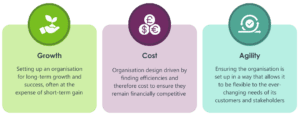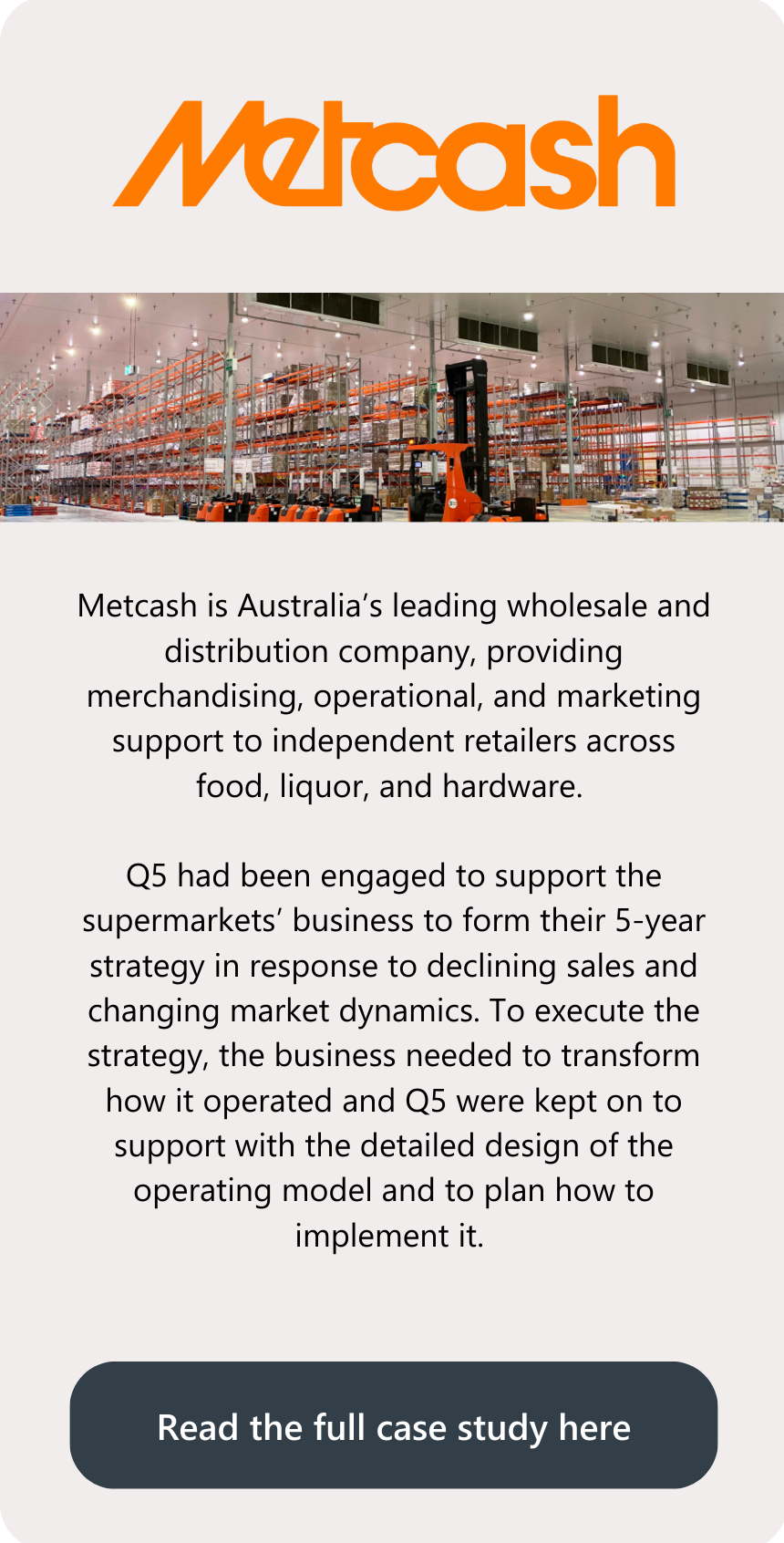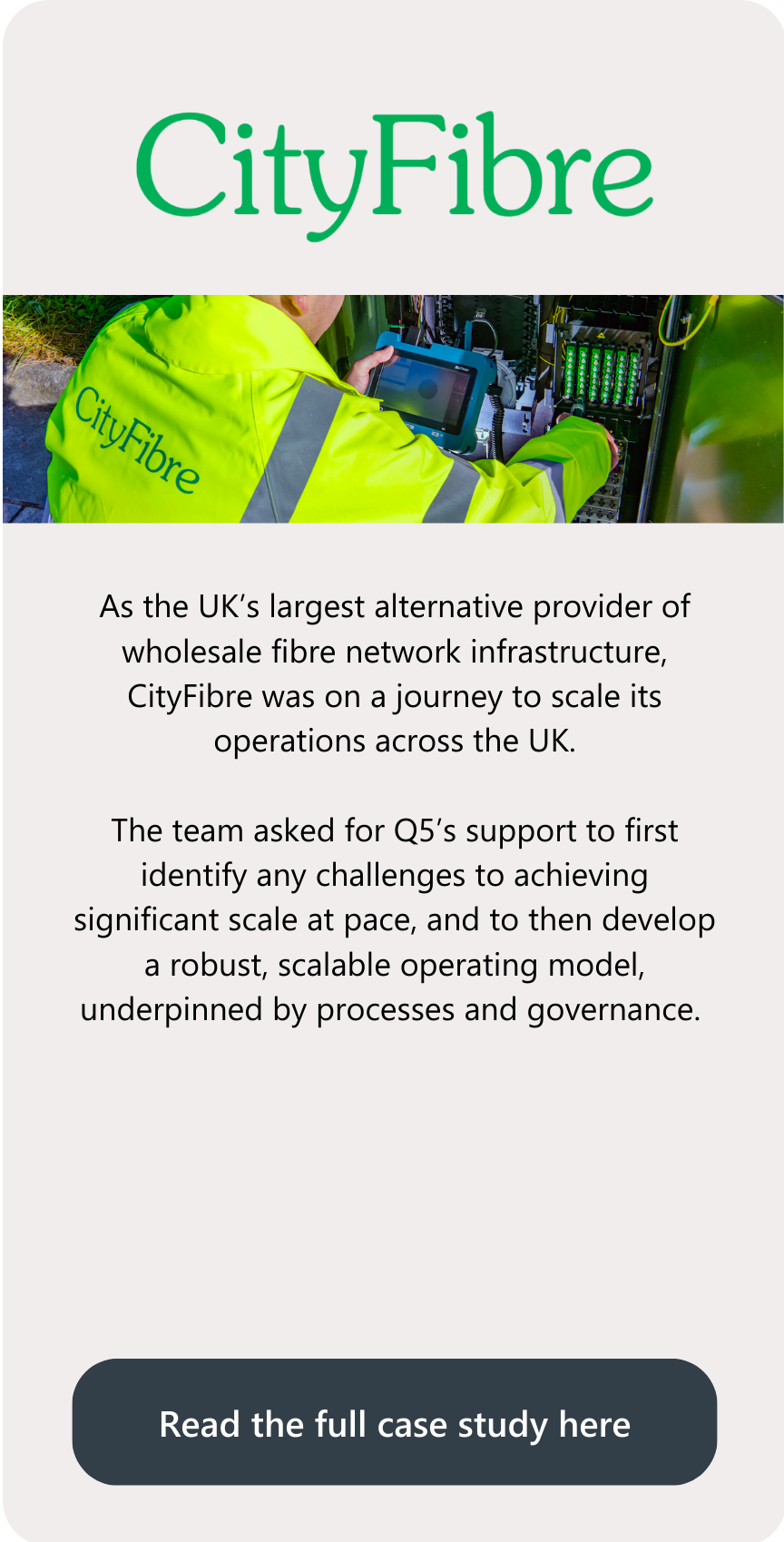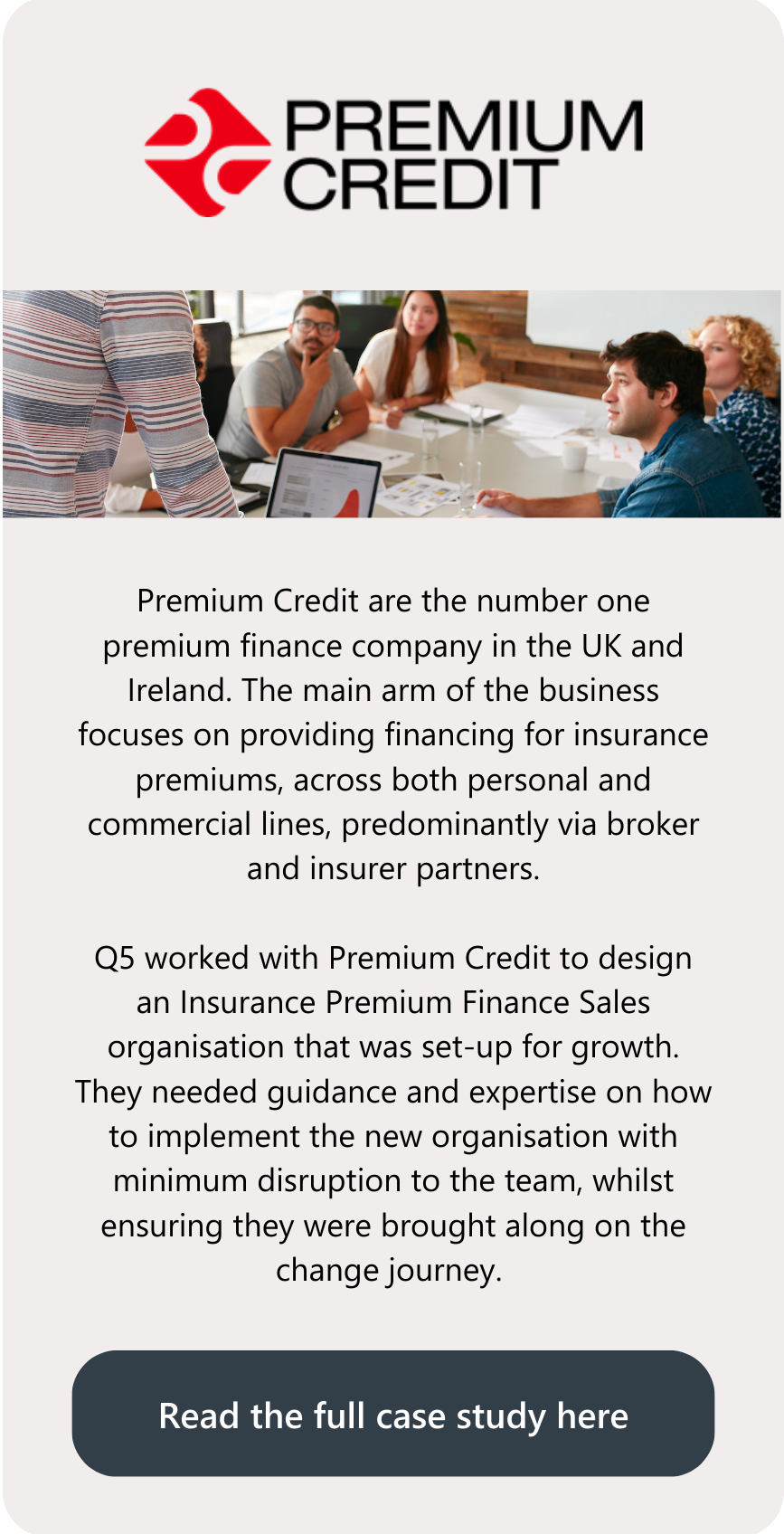The article provides a versatile approach to organisational design that effectively balances multiple strategic priorities, such as growth, cost, and agility. It offers concrete advice for reconciling conflicting business priorities within an operating model redesign. Drawing on Q5’s proven methodologies and tools, a practical blueprint is also given for establishing a solid base for organisational redesign.
An environment that calls for a mindset shift
Businesses today navigate exceptionally challenging market conditions, perhaps the most demanding in recent history. There are several market factors that successful organisations need to be responsive to when developing tactical and longer-term strategic plans. We’ve seen high levels of inflation, coupled with high-interest rates, which has put strain on consumers and businesses alike. Organisations are also facing challenges retaining their talent amidst the demand for skills in the job market.
These factors compel a fresh perspective on organisational design, with an ever increasing need to balance complementary and conflicting strategic goals.
The power struggle between competing business priorities
Leaders today are tasked with a complex balancing act: Ensuring they have a sustainable cost-base, whilst investing in long-term growth opportunities, delivering for today’s customers whilst also paving the way for tomorrow’s, and being flexible and responsive to the environment around them whilst maintaining operational stability.
The common pitfall in organisational design is the inclination to prioritise one strategic goal (such as growth or cost cutting) over others, often to the detriment of overall balance.
We are all aware of the examples – the retailer who designed for cost reduction but neglected to invest in their online presence; the manufacturer who invested heavily in automation but lost key talent; the bank that offshored its customer support but lost sight of the real-time customer feedback. Each illustrates the peril of single-minded focus—a strategy that can ultimately hinder adaptability and sustainable success.

Going beyond just a structural response
While most decisions are shaped by pressing, immediate needs of the organisation, there is clearly a need for the operating models of today to account for resilience, flexibility, and agility. While focusing on a singular goal might yield immediate benefits, the broader consequences for the organisation—including its customers, products, systems, and people—can be profound.
Leaders face a choice: react to short-term pressures as and when they arise, or delve deeper, weighing the near-term actions against their long-term effects. This isn’t just about aligning immediate measures with your company’s future vision. It’s a comprehensive evaluation of your strategic goals, workforce requirements, and potential growth opportunities, some of which may yet be undiscovered.
The traditional ‘single-lens’ approach to operating model design
The accompanying graphic represents the strategic lenses we commonly see organisation’s consider when considering a redesign of their operating model.

- Growth: Setting up an organisation for long-term growth and success, often at the expense of short-term gain
- Agility/Speed: Ensuring the organisation is set up in a way that allows it to be flexible to the ever-changing needs of its customers and stakeholders
- Cost: Organisation design driven by finding efficiencies and therefore cost to ensure they remain financially competitive
Of course, there are a number of additional levers at an organisation’s disposal which will enable it to meet its long-term goals, for example, talent, culture, technology and innovation. Each of these levers will have different characteristics based on the strategic direction of the organisation.
Embracing diverse business needs through a ‘multi-lens’ approach
On their own, an organisation could be designed around each of these lenses as a core strategic driver, however, the reality is that the challenges faced by organisations are multidimensional, and therefore a balance needs to be struck to accommodate each of these drivers.
By doing this, leaders can ensure they are designing an organisation that can achieve a harmonious balance between the elements that will make the business successful.
Balancing growth and cost:
“How can you build an organisation that is focused on growth whilst also being cost conscious”
There are a number of levers you can pull in your organisation to allow you to control costs, whilst also ensuring that you create an organisation that can grow. Our recent article on talent demonstrates how you can develop your people internally and build a talent-focused organisation that has a mindset and culture of growth and is conscious of cost. Innovation can still exist, but in a targeted way, with skills developed to support these initiatives. A clear focus on optimising processes will ensure your organisation runs efficiently and frees up capacity for you to focus energy into growth initiatives.
Balancing growth and agility:
“How can you build an organisation that is focused on long-term growth, whilst being agile and reactive to the needs of the market/customers?”
Building a test and learn culture where people are encouraged to experiment and fail fast will ensure your organisation can adapt to the needs of your customers and the market. Similar to the previous scenario, a focus on investing in talent that will enable you to pursue growth areas at speed is key, achieved by having a well-defined strategic workforce plan. Agility and growth rely on well-designed and considered governance – ensuring you are able to make decisions quickly, reduce hierarchy and minimise bureaucracy. Your organisation design has to take into account that increased agility may mean there are initiatives which don’t work, however when they do, time and resource can be deployed to ensure they become the drivers of long-term growth.
Balancing agility and cost:
“How can you build a quick/agile organisation whilst being focused on cost?”
Cost can often be a blocker to agility as organisations need to take a more risk-averse approach to where investment goes. Although these drivers are the most conflicting of the three we are exploring, it is still possible to build an organisation that balances both. In fact, when supported by the right organisation design, a cost-constrained environment can boost agility. A focus on investing in technologies which will allow you to optimise process will ensure you are quicker to respond to customer needs, without increasing the size of the organisation. A clearly defined set of accountabilities (and associated budgets) allows your teams to operate freely and quickly without unnecessary levels of sign-off and governance.
A starting point for successful operating model design
Successful operating model design is not a one-size-fits-all endeavour; we recognise that each organisation’s needs are shaped by its unique internal dynamics, external influences, and strategic priorities at the time. A meticulous, data-driven assessment is essential to identify what’s needed to evolve from your current state to your desired future. This initial scan forms the backbone of a responsive operating model that aligns tightly with your strategic priorities.
Every organisation embarks on its redesign journey from different stages. Perhaps you’re reading this article to discover fresh perspectives or you’re in the midst of identifying key priorities. Some may even be at the starting line, uncertain of the first step. No matter what stage you’re in, below are some guiding points taken from our tried-and-tested Metro Map methodology hat you can use to help gather or validate the insights needed to develop a robust foundation for your operating model redesign.
1. Understand your business today: Deep dive into the key components of your organisation and form a clear understanding of how well each of these are positioned to deliver against your strategic goals.
Practical tip: At Q5, we use our Organisation Effectiveness Model (OEM) to turn key organisational elements into measurable units to help evaluate present performance. In practice, the framework is tailored to the unique profile of each business, while allowing benchmarking, comparisons and tracking over the long-term.
2. Understand where you want your business to be in the future: Define what success looks like for your organisation across the multiple strategic lenses and how each of these drivers may complement or conflict with each other.
Practical tip: Foster consensus among leaders about the ultimate objectives, ensuring they are both ambitious and realistic. We advocate for direct engagement with stakeholders through interviews and working sessions to pinpoint necessary changes, ensuring your future state is grounded in practical insights.
3. Identify change areas: Now that you have a full understanding of your organisation, ascertain which parts require the most attention to meet your strategic goals. Activities may need to be given closer proximity to allow you to move at pace, or completely new work may need to be built into the day-to-day operation
Practical tip: Leverage data sources and visualisation tools to identify the best optimisation opportunities within the business. For instance, we use ActivityQ to map out time expenditure and role clarity, optimising for productivity.
4. Plan how you will make the design a reality: After working through what your organisation will look like in the future, establish how exactly to make the changes you need to. Differentiate between ‘quick wins’ and more complex initiatives that require more considered implementation.
Practical tip: Test out design scenarios based on your chosen priorities to form a clear understanding of which changes have minimal adverse impact to key parts of the business. We use OrgMaps with our clients to simulate organisational changes, provide an accurate view of the impact on structure, cost, and key metrics.
Where we’ve done this best
Get in touch if you’d like to learn more

Natalie Firth
Head of Organisational Design

Melissa Kirby
Associate Partner

Sam Kumar
Principal Consultant

Phoebe Dunn
Partner
We are all about organisational health, which separates good organisations from the great. Whether our clients are at the top of their game (and want to remain there) or are in ‘turnaround’ mode, we all need to work on our organisational health.
Whatever the situation, be it a strategic conundrum, a market opportunity, or an operational gripe, we combine the art and science of organisational health to help our clients improve and excel.
Please visit the firm link to site







